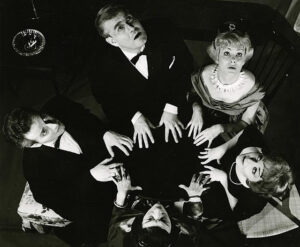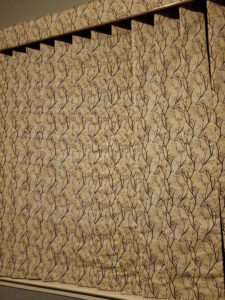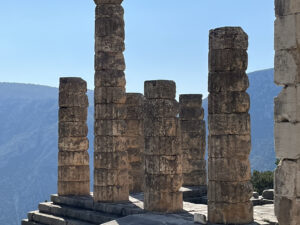We write books. It’s what we love to do. But what other creative pursuits would we be pursuing if we weren’t wordsmithing? How do we scratch that creative itch?
Have we ever had the urge to pick up a paintbrush or throw a pot? Sing or play an instrument?
Let’s see how two mystery writers would be creative on a road not taken. Or maybe we did take it, and it’s a secondary road instead of the main highway.
Janet Dawson
Enter Stage Left

If I wasn’t so introverted, I’d be an actor. But I already am!
Sitting at a computer making up stuff works for me. I have a whole cast of characters parading around in my head—and I can play ALL OF THEM! Without getting up from my chair. Although I do. Action sequences in my office as well as my head. I can whisper the lines or say them as loud as I like. I can direct the play and dress the set.
As the incomparable Chita Rivera wrote in her memoir, “Like most actors and performers, I have lived a lot of my life in my imagination.”
That works for writers, too.
I have done the acting part. On stage and off.
I started early. I was four years old when my kid brother arrived. He wasn’t much good as a playtime companion until he became a toddler. Then he got to the point where he didn’t take direction very well. Little brothers—what can you do?
I was always good at entertaining myself. There’s an old photo of me playing train, all dressed up and choo-chooing with a couple of chairs.
When I was in grade school, I spent recess out on the playground acting out stories of my own devising. I seem to recall one sixth-grade saga that involved me having an adventure on Mars, and having a damned good time of it. I even wrote a play while I was in the sixth grade. My teacher was so impressed we wound up putting on a show for the first- and second-graders.
In high school I worked behind the scenes in drama club productions. In college I majored in English and drama for a couple of years, then I finally realized I was a writer and switched to journalism.
Fast forward a few years, when I tried out for a part in Neil Simon’s Come Blow Your Horn at the hometown little theatre, known as the Footlighters. I got the part, playing the mother. We performed for two nights. On the first night, during my long monologue, I was supposed to pull out a drawer to look for pencil and paper. The drawer pulled out, all right, and I couldn’t get it shut. Ack! I still managed to say my lines, despite being quite rattled. On the second night, no problems with the damned drawer, and I nailed the monologue.
My next foray into acting was while I was in the Navy, stationed on Guam. There was a little theatre group there, made up primarily of service members and their family members. When I joined, they’d been doing melodramas. I suggested something different. How about Noel Coward’s great comedy Blithe Spirit? We did the play and I got to play one of my favorite roles—Madame Arcati, the zany medium who starts the spectral ball rolling at a séance and complicates the protagonist’s life by bringing back the ghost of his first wife.
We didn’t have a set venue. Instead, we took our costumes, props and makeshift sets on the road, performing at clubs for officers’ and enlisted personnel—enthusiastic and appreciative audiences all.
Favorite story, though it wasn’t much fun at the time. On the day of one performance, I’d been to the beach. And got sunburned. I mean, really sunburned. To the point of flaming red skin and ouch if touched. One of my Blithe Spirit scenes involved me flinging myself around during a séance and then collapsing to the floor. Whereupon two cast members picked me up by the legs and shoulders and deposited me on a sofa. Sunburn and all. Talk about ouch!
I haven’t done much acting since, unless I count acting out scenes from my novels in front of my computer. And every now and then, I look at the website for the local little theatre and think about auditioning.
D. Z. Church
This Odd Gift

I love the look, feel, drape and possibilities of fabric. I adore the older cotton fabrics like batiste, and lawn, and their history. Someday I will write a thriller about the rediscovery of Dhaka cotton, or the reemergence of Thai silk. For those of you who read Saving Calypso, I fantasize that Grieg and Calypso are the perfect protagonists for the Dhaka cotton story. I also have a half-written book about a young woman who sells her clothing designs through an online store. When the wife of a prime minister begins wearing her designs all h— breaks loose.
Fabric draws me like a hummingbird to nectar. I designed my own clothes from fourteen years old on, turning it into a small cottage industry the first two years of college where I designed dresses for my friends. I had a reputation, you see, for my designs. Every friend for whom I designed a dress either received a marriage proposal or entered into a long-term relationship, which are kind of the same thing. I liked making dresses for my friends that highlighted their coloring and their best features. And since we were poor college students, doing so from fabrics they could afford.
Now, here is the odd gift part, I can look at almost any object and recreate it in fabric. I once built a fabric model of a friend’s Cessna 172, complete with wings and tail. Stuffed animals are second nature to me. Dogs, cats, flying pigs. I made patterns from oak, holly, and maple leaves. I cut them out in various fall colors, sewed, then stuffed them, and made wreaths. I used the same leaves to create a hanging sign with stuffed letters that read Merry Christmas.
Tablecloths, valances, you name it. Give me an hour in a fabric shop and I’m on my way. I look at the object, cut the cloth, and off I go. I don’t use patterns. I don’t. I see possibilities for the use of textiles everywhere. One of my favorite things is to cover the blades of vertical blinds in fabric. It freshens up the look of the room, you can wash the fabric, or replace them when you wish. It just takes a little time picking fabric, cutting, and sewing. (see below for instructions)
I still have folders of dresses I designed when I was in my teens. I would read a book and design the clothes for each scene. The designs I did for Mary Stewart’s The Moonspinners, Wild Fire at Midnight, and Madam, Will You Talk are in a folder in my filing cabinet. I imagined my name on a marquee, like Edith Head, or any of the great movie costume designers.
I had encouragement. My great-aunt was friends with Halston, a retired single woman next door spent her entire career with Schiaparelli. The same great-aunt wangled me an entry job at Vogue when I graduated college with a degree in journalism. That close. They were great influences.
But practicality has always been my weakness. I wanted some security, then, anyway. Not now, now I write, and anyone will tell you, that there is no security in that. Nor is there in creating with fabric, just hard work, and uncertainty. What they have in common is this: you do your best, put it out there, and pray people will enjoy what you’ve created.
Oh, and I still get mad fits of sewing. I can’t help myself.
To cover a vertical blind: measure the length of a blade, and the width. Cut strips ¼” larger. For instance, 5 ½ inches wide for a 5-inch blade. Cut the length two inches longer than needed. Finish one end of the length, leave the other raw. Sew the two pieces together ¼” on a side, right sides facing each other. Turn the blade right side out and slide it onto the blind blade. Tuck the raw end in at the bottom. And you’re done. If you use a pattern, you’ll need to match the pattern across the blades. Also, I typically use white for the window side of the blade and a pattern or complimentary color for the inside.
Janet Dawson
A Place to Die For: Delphi, Greece

The center of the world. That’s what the ancient Greeks thought. The Oracle of Delphi was consulted about anything of importance in the classical world. This site on the steep slopes of Mount Parnassus is full of treasures. The path known as the Sacred Way zig-zags up the hillside, going past ruins that date to the sixth century BC. Among them are the Treasury of Athens, not a treasury full of money, but of offerings and devotions to the god Apollo, whose beautiful temple rises above. Beyond the temple, one climbs further, to the amphitheater.
I visited Delphi during my recent trip to Greece. The drive from Athens to Delphi goes through the countryside and then begins climbing on a two-lane road with switchbacks, finally reaching the village of Arachova, clinging to the mountainside. The roads that wind through the village are so narrow the large tour buses can barely navigate them, with other vehicles having to wait to pass. From the top, I caught glimpses of the Gulf of Corinth, about ten miles away as the crow flies.
It’s a great scene for a mystery. In fact, Mary Stewart already wrote that one. She set My Brother Michael in and around Delphi and Arachova, moving the action from Athens to Arachova and Delphi, even writing some scenes that take place in the far below in the seaside town of Itea, and of course on the sacred precincts of Parnassus itself.
Still, it’s such a wonderful, compelling location that I’m considering a book set in Greece.
